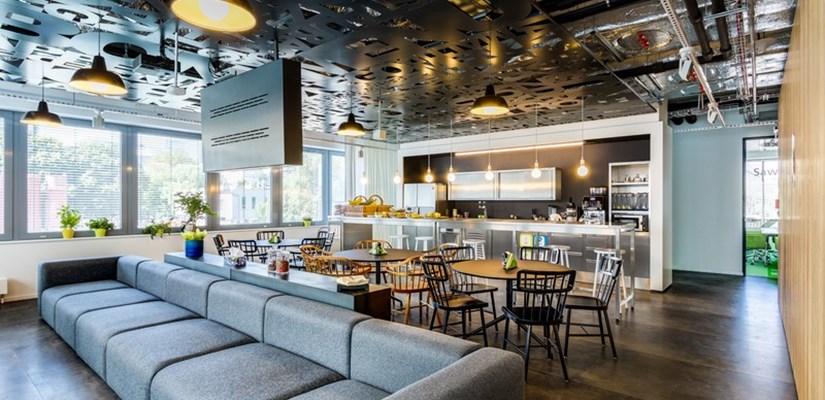
While working in an office, one employee generates 100W of heat, the equivalent of one incandescent light bulb. Furthermore, a typical office workplace that comprises a computer with a monitor can generate as much as two traditional light bulbs – up to as much as 125W.
If there are 140 employees working in an area of 1,000 sqm, the heat produced will be sufficient to heat up two medium-sized family houses even when the outdoor air temperature is 20 degrees below zero. If each employee works in front of a computer, the heat will be sufficient to warm four such houses.
Modernity is much hotter
In older buildings, the necessity of heating results from the fact that heat is lost through external walls. What is more, part of this heating is also used to heat the ventilated air. However, the situation changed when modern solutions were applied.
“An office building can be compared to a thermos with the inside filled with numerous heat-generating sources. When the temperature outdoors is lower than indoors, the heat is naturally lost through the building envelope. The facades that are currently being designed have the proper thermal resistance. Furthermore, the limited external wall space significantly reduces the amount of heat that is lost in this way”, explains Cezary Grzebalski, Technical Quality Manager at Skanska Commercial Development Europe.
So what happens with the rest of the heat generated by both people and office equipment? It might be used to heat the air in the ventilation system. But extremely effective and energy-efficient heat recovery systems that use the extracted air minimize the amount of air needed for this. Therefore, heat must be taken over by cooling systems.
Comfort that's not gone with the wind
Proper ventilation systems not only result in creating optimal temperatures. They also have an influence on energy bills and the possibility of space arrangement.
“In modern office schemes we apply solutions that guarantee a high level of thermal comfort with a low level of energy consumption. They are based on chilled water usage and allow for free office space arrangement .This flexibility includes the possibility of changing the leased space’s designation during its exploitation by reducing or increasing the number of conference rooms. One such solution is the application of chilled beams,” asserts Cezary Grzebalski.
Apart from thermal comfort and energy-efficiency, this solution generates further advantages including an absence of moving parts, namely fans, resulting in a space that is both draught and noise free. Ventilation installations are closely connected to air conditioning systems.
“They are designed in such a way as to guarantee the low velocity of air flow. This also results in lower energy consumption and, therefore, lower operation costs. This kind of solution also enables us to use very efficient sources of cool air, equipped with free-cooling systems that use the lower temperature of external air to reduce the temperature inside office buildings, in colder periods of the year,” adds Cezary Grzebalski.
According to a 2006 research on staff efficiency in various temperatures, employees’ productivity measured at 30 and 15 degrees Celsius was 10% lower compared to optimal conditions between 21-23 degrees[1]. A more recent study has supported this effect and states that there is a 4-6% decrease in staff efficiency when the temperature varies greatly from the optimum[2]. Therefore, when one takes into consideration the fact that a 1% increase in employees’ efficiency can annually generate hundreds of thousands of dollars for companies, it is easy to conclude that it is well worth taking care of the thermal comfort in one’s workplace.
[1] Wargorcki P. (ed.) Seppänen O. (ed.) Andersson J. Boerstra A. Clements-
Croome D. Fitzner K. Hanssen SO. (2006) REHVA Guidebook: Indoor Climate
and Productivity In Offices
[2] Lan L. Wargocki P. Wyon DP. Lian Z. (2011) Effects of thermal discomfort in an office on perceived air quality, SBS symptoms, physiological responses, and human performance. Indoor Air 21:5, pp 376-90